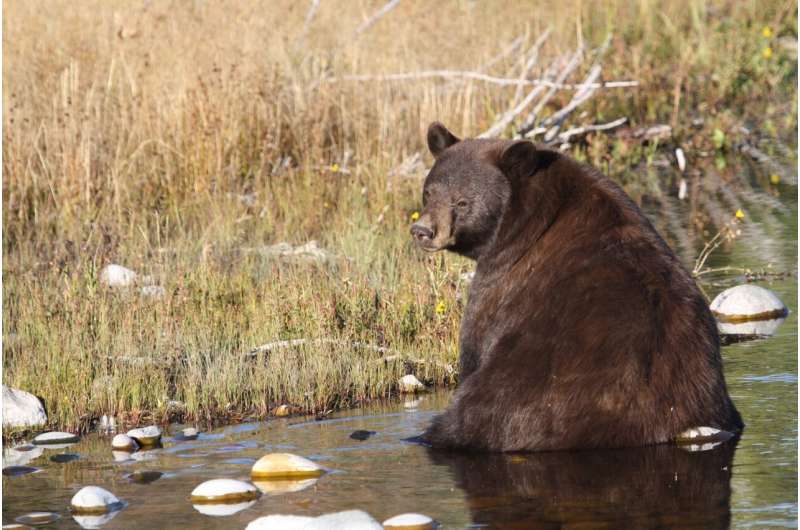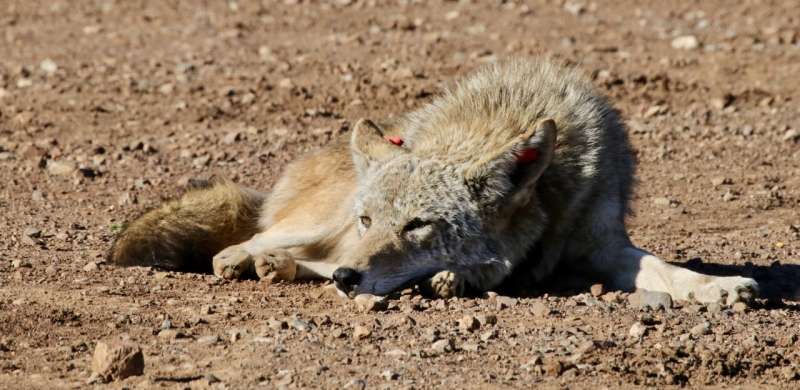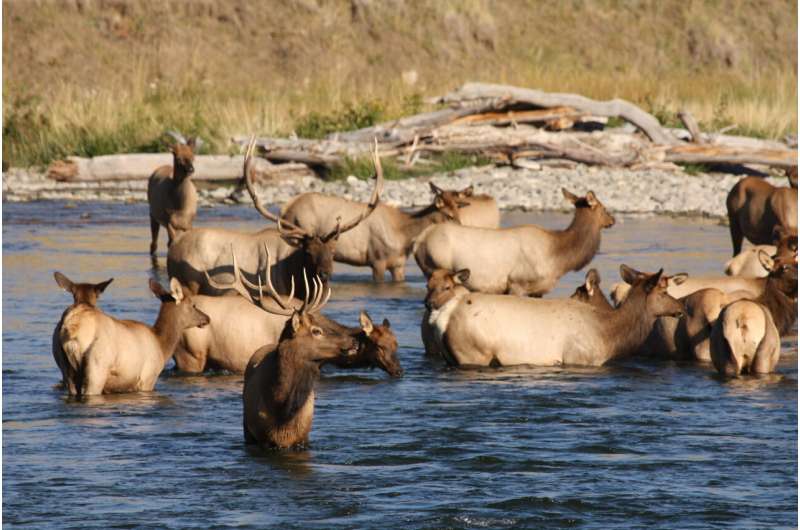This article has been reviewed according to Science X's editorial process and policies. Editors have highlighted the following attributes while ensuring the content's credibility:
fact-checked
peer-reviewed publication
trusted source
proofread
In hotter regions, mammals shown to seek forests and avoid human habitats

The cool of the forest is a welcome escape on a hot day. This is especially true for mammals in North America's hottest regions, according to a study from the University of California, Davis. The study indicates that, as the climate warms, preserving forest cover will be increasingly important for wildlife conservation.
The study, published in the journal PNAS, found that North American mammals—from pumas, wolves and bears to rabbits, deer and opossums—consistently depend on forests and avoid cities, farms and other human-dominated areas in hotter climes. In fact, mammals are, on average, 50% more likely to occupy forests than open habitats in hot regions. The opposite was true in the coldest regions.
"Different populations of the same species respond differently to habitat based on where they are," said lead author Mahdieh Tourani, who conducted the study while a postdoctoral researcher at UC Davis and is now an assistant professor of quantitative ecology at the University of Montana, Missoula. "Climate is mediating that difference."
Tourani points to the eastern cottontail as an example. The study showed the common rabbit preferred forests in hotter areas while preferring human-dominated habitat, such as agricultural areas, in colder regions.

Not one-size-fits-all
Her example illustrates "intraspecific variation," which the study found to be pervasive across all North America's mammals. This runs contrary to a longstanding practice in conservation biology of categorizing species as those that live well alongside people and those that don't. The authors say there is growing recognition of ecological flexibility, and that species are more complicated than those two categories suggest.
"We can't take a one-size-fits all approach to habitat conservation," said senior author Daniel Karp, a UC Davis associate professor in the Department of Wildlife, Fish and Conservation Biology. "It turns out climate has a large role in how species respond to habitat loss."
For example, if elk are managed under the assumption that they can only live in protected areas, then conservation managers may miss opportunities to conserve them in human-dominated landscapes.
"On the other hand, if we assume a species will always be able to live alongside us, then we might be wasting our effort trying to improve the conservation value of human-dominated landscapes in areas where it is simply too hot for the species," Karp said.

A pathway for conservation
For the study, the authors leveraged Snapshot U.S., a collaborative monitoring program with thousands of camera trap locations across the country.
"We analyzed 150,000 records of 29 mammal species using community occupancy models," Tourani said. "These models allowed us to study how mammals respond to habitat types across their ranges while accounting for the fact that species may be in an area, but we did not record their presence because the species is rare or elusive."
The study provides a pathway for conservation managers to tailor efforts to conserve and establish protected areas, as well as enhance working landscapes, like farms, pastures, and developed areas.
"If we're trying to conserve species in working landscapes, it might behoove us to provide more shade for species," said Karp, whose recent study about birds and climate change drew a similar conclusion, with forests providing a protective buffer against high temperatures.
"We can maintain patches of native vegetation, scattered trees, and hedgerows that provide local refugia for wildlife, especially in places that are going to get warmer with climate change."
Additional co-authors included Rahel Sollmann of the Leibniz Institute for Zoo and Wildlife Research, Roland Kays of North Carolina State University and North Carolina Museum of Natural Sciences, Jorge Ahumada of Conservation International and Arizona State University, and Eric Fegraus of Conservation International.
More information: Tourani, Mahdieh et al, Maximum temperatures determine the habitat affiliations of North American mammals, Proceedings of the National Academy of Sciences (2023). DOI: 10.1073/pnas.2304411120. doi.org/10.1073/pnas.2304411120
Journal information: Proceedings of the National Academy of Sciences
Provided by UC Davis




















